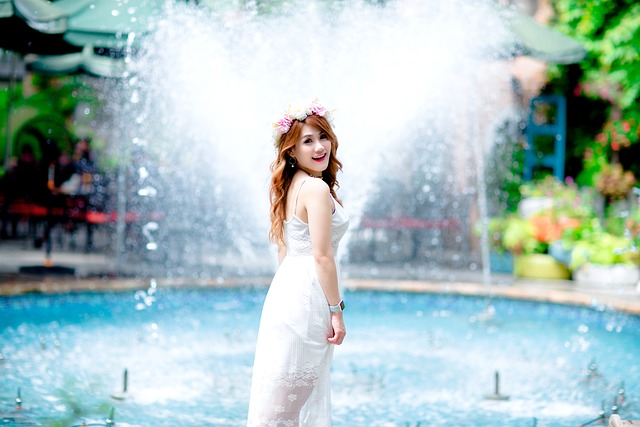Optimizing your backyard involves strategic outdoor space zoning to create a versatile and balanced layout. By dividing your yard into specific zones for entertaining, relaxing, gardening, playing, and storage, you enhance functionality and cater to diverse needs. This approach includes well-defined areas for patios, gardens, seating, play, and storage, ensuring each element serves a purpose. Implement backyard design tips like multi-purpose features, seamless pathways, and smart space allocation to achieve a functional, inviting outdoor living area that blends style and practicality, incorporating keywords like backyard layout ideas, patio and garden zoning, and functional backyard zones.
Unleash your backyard’s full potential with expert tips on creating functional layouts. In today’s guide, we delve into the art of transforming your outdoor space into a vibrant oasis. From understanding essential outdoor space zoning to designing multi-purpose areas and optimizing flow, we cover it all. Discover how to balance privacy and openness, integrate natural elements for ambiance, and create dedicated zones for entertainment, relaxation, play, and storage. Get ready to transform your backyard into a seamless blend of style and practicality with these insightful backyard design tips.
Understanding Outdoor Space Zoning: The Foundation of Functional Backyards
Understanding Outdoor Space Zoning is the foundation for creating functional backyard layouts. It involves dividing your yard into distinct zones tailored to different activities and needs, such as entertaining guests, relaxing, gardening, or playing with pets. This strategic approach optimizes space utilization, enhancing overall backyard flow.
By defining these zones—often including areas for patios, gardens, seating, play, and storage—you can ensure each element serves a purpose and creates a balanced, multi-purpose outdoor living area. Outdoor space zoning also aids in planning for future expansion or changes in lifestyle, making your backyard layout ideas adaptable and efficient.
– Defining zones for specific activities
Creating a well-organized backyard layout involves strategic planning to ensure your outdoor space meets all your needs and offers a seamless flow for various activities. One key aspect is defining zones dedicated to specific purposes, such as entertaining guests on a patio, cultivating vegetables in a garden, or relaxing in a quiet seating area. This approach maximizes functionality by catering to different activities while maintaining a harmonious overall design.
Outdoor space zoning allows you to thoughtfully arrange features, ensuring each zone supports its intended function. For instance, consider separating zones for dining and socializing, recreation, and tranquility. A dedicated dining patio with comfortable seating can host gatherings, while a nearby fire pit or outdoor kitchen adds versatility for various events. Nearby, a serene sitting area with plush cushions invites relaxation, promoting a balanced blend of social engagement and peaceful retreats within your backyard haven.
– Balancing privacy and openness
Creating a harmonious balance between privacy and openness is an essential aspect of successful backyard layout ideas. When planning your outdoor space zoning, consider different areas dedicated to various activities and preferences. For instance, designate a secluded corner with tall shrubs or a natural fence for intimate gatherings or quiet relaxation, offering a sense of privacy. Conversely, open up the backyard design tips by creating ample spaces for entertaining, such as a central patio area perfect for dining al fresco or hosting gatherings. This blend of designated zones allows for both peaceful retreats and vibrant social hubs within your functional backyard layout.
Outdoor living area design shouldn’t be limited to one style or function; instead, embrace multi-purpose backyard layouts. Optimize the flow between different zones to create a seamless transition from dining areas to relaxation spots or play areas. Consider using pathways or gently sloping grass to connect each zone, ensuring a logical and inviting flow that enhances the overall backyard planning process. By thoughtfully integrating these elements, you’ll enjoy a versatile outdoor space that caters to various needs and preferences, making your backyard a truly vibrant and functional retreat.
Backyard Design Tips for Optimal Functionality
When designing your backyard, consider implementing strategic zoning to create a functional outdoor space that caters to various activities and preferences. Divide your backyard into distinct zones dedicated to specific purposes like entertaining (patio area), relaxing (garden seating nook), playing (children’s zone with toys or equipment), and gardening (vegetable patch or flower beds). This organization enhances overall functionality, ensuring each area serves its intended purpose seamlessly.
Optimal backyard flow is crucial for a pleasant outdoor experience. Plan pathways that connect these zones smoothly, encouraging movement while keeping your space organized. Incorporate multi-purpose elements like a fire pit that doubles as a gathering spot or a vertical garden that adds visual appeal and saves valuable floor space. By thoughtfully integrating these design tips into your backyard layout ideas, you’ll create an inviting, functional outdoor living area tailored to your lifestyle and entertainment needs.
Creating a well-functioning backyard layout involves strategic outdoor space zoning and thoughtful design. By defining zones for various activities while balancing privacy and openness, you can optimize your backyard’s potential as an extension of your indoor living space. Implement these expert tips to transform your backyard into a vibrant multi-purpose area that seamlessly blends patio and garden elements, enhancing your outdoor living experience and creating lasting memories.
